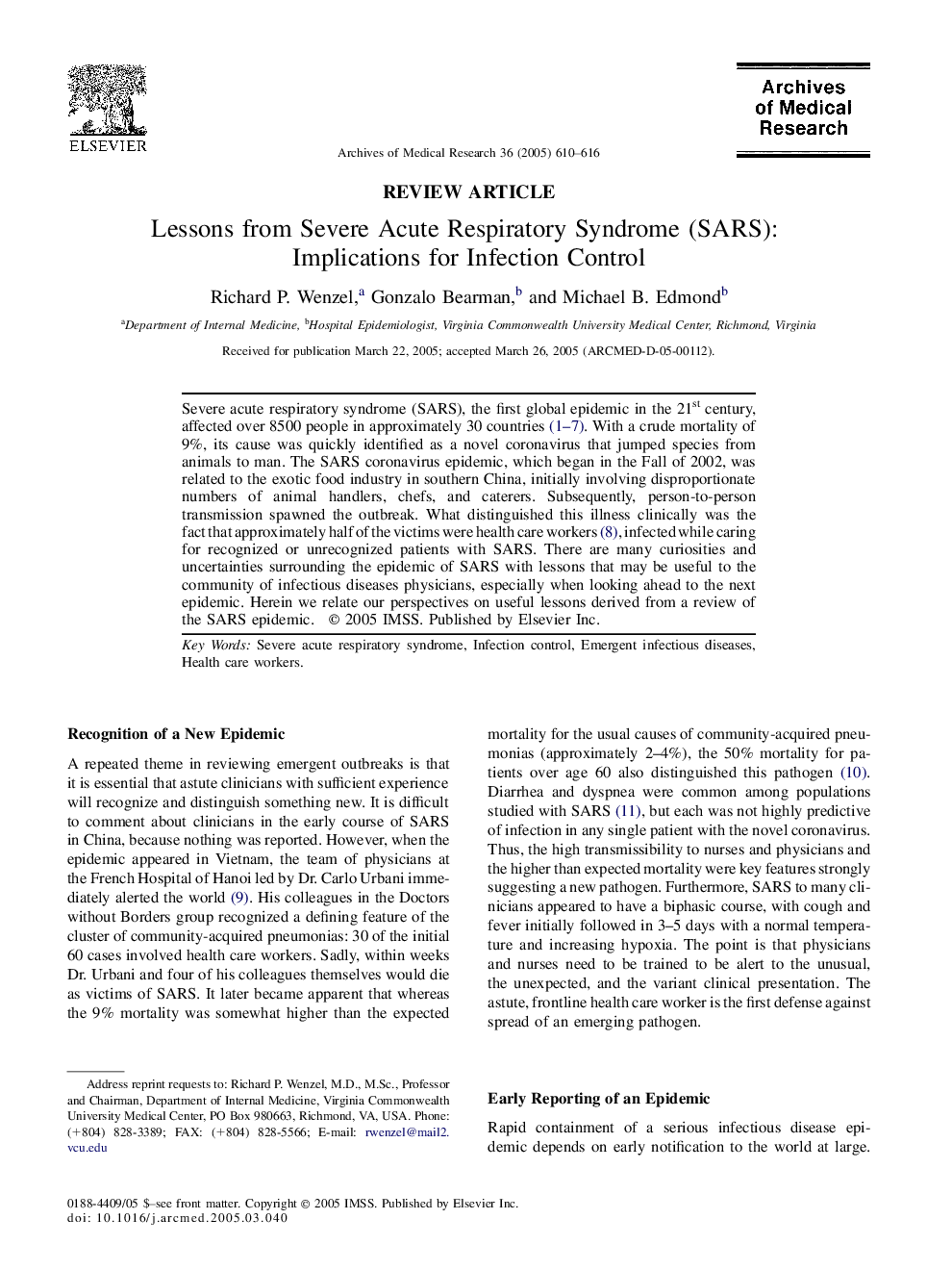| کد مقاله | کد نشریه | سال انتشار | مقاله انگلیسی | نسخه تمام متن |
|---|---|---|---|---|
| 10040394 | 1595539 | 2005 | 7 صفحه PDF | دانلود رایگان |
عنوان انگلیسی مقاله ISI
Lessons from Severe Acute Respiratory Syndrome (SARS): Implications for Infection Control
دانلود مقاله + سفارش ترجمه
دانلود مقاله ISI انگلیسی
رایگان برای ایرانیان
کلمات کلیدی
موضوعات مرتبط
علوم پزشکی و سلامت
پزشکی و دندانپزشکی
پزشکی و دندانپزشکی (عمومی)
پیش نمایش صفحه اول مقاله

چکیده انگلیسی
Severe acute respiratory syndrome (SARS), the first global epidemic in the 21st century, affected over 8500 people in approximately 30 countries 1, 2, 3, 4, 5, 6, 7. With a crude mortality of 9%, its cause was quickly identified as a novel coronavirus that jumped species from animals to man. The SARS coronavirus epidemic, which began in the Fall of 2002, was related to the exotic food industry in southern China, initially involving disproportionate numbers of animal handlers, chefs, and caterers. Subsequently, person-to-person transmission spawned the outbreak. What distinguished this illness clinically was the fact that approximately half of the victims were health care workers (8), infected while caring for recognized or unrecognized patients with SARS. There are many curiosities and uncertainties surrounding the epidemic of SARS with lessons that may be useful to the community of infectious diseases physicians, especially when looking ahead to the next epidemic. Herein we relate our perspectives on useful lessons derived from a review of the SARS epidemic.
ناشر
Database: Elsevier - ScienceDirect (ساینس دایرکت)
Journal: Archives of Medical Research - Volume 36, Issue 6, NovemberâDecember 2005, Pages 610-616
Journal: Archives of Medical Research - Volume 36, Issue 6, NovemberâDecember 2005, Pages 610-616
نویسندگان
Richard P. Wenzel, Gonzalo Bearman, Michael B. Edmond,